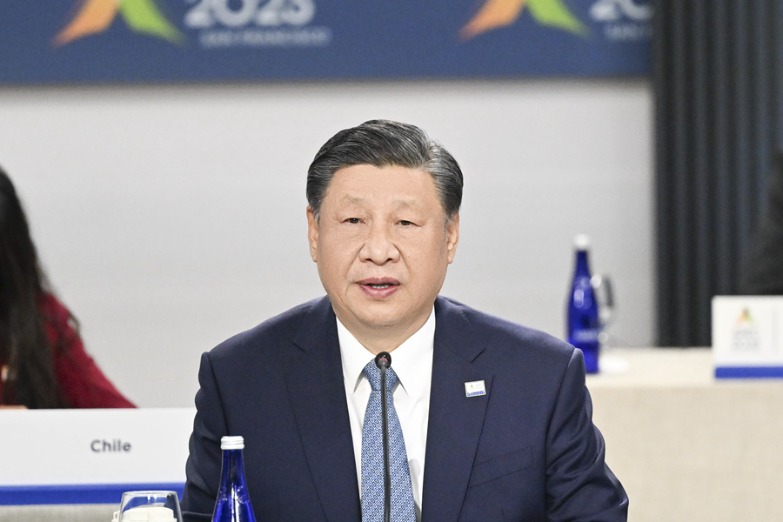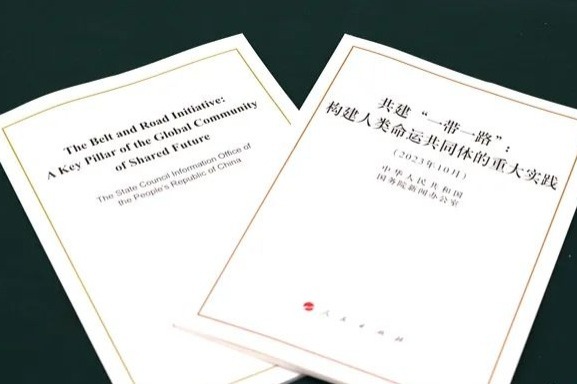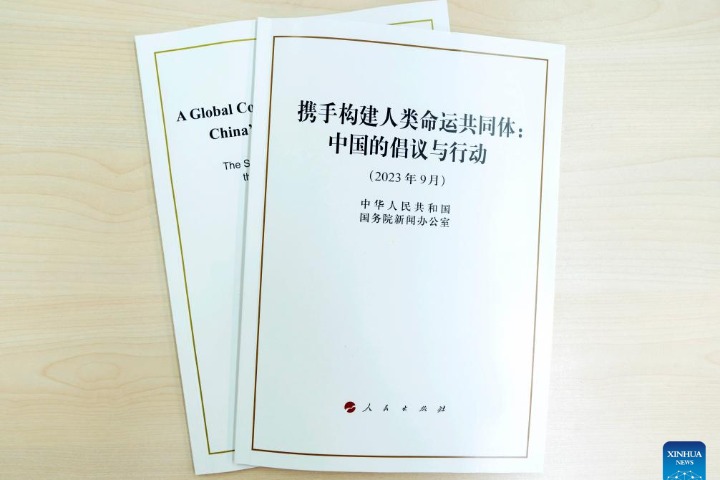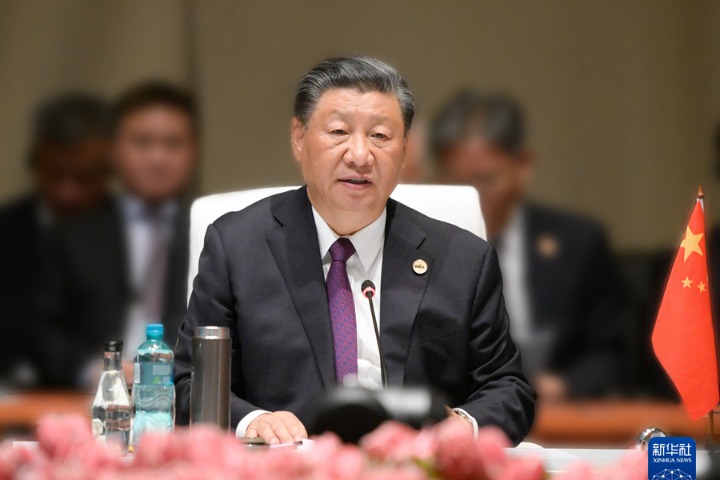新疆的若干历史问题(双语全文)
新华网 2019-07-22 09:19

国务院新闻办公室7月21日发表《新疆的若干历史问题》白皮书。全文如下:
新疆的若干历史问题
Historical Matters Concerning Xinjiang
(2019年7月)
中华人民共和国
国务院新闻办公室
The State Council Information Office of
the People’s Republic of China
July 2019
目录
Contents
前言
Preamble
一、新疆是中国领土不可分割的一部分
I. Xinjiang Has Long Been an Inseparable Part of Chinese Territory
二、新疆从来不是“东突厥斯坦”
II. Xinjiang Has Never Been “East Turkistan”
三、新疆各民族是中华民族的组成部分
III. The Ethnic Groups in Xinjiang Are Part of the Chinese Nation
四、维吾尔族是经过长期迁徙融合形成的
IV. The Uygur Ethnic Group Formed Through a Long Process of
Migration and Integration
五、新疆各民族文化是中华文化的组成部分
V. Xinjiang Ethnic Cultures Are Part of Chinese Culture
六、新疆历来是多种宗教并存的地区
VI. Multiple Religions Have Long Coexisted in Xinjiang
七、伊斯兰教不是维吾尔族天生信仰且唯一信仰的宗教
VII. Islam Is Neither an Indigenous nor the Sole Belief System
of the Uygurs
结束语
Conclusion
附件:中国历代纪元简表
Appendix: A Brief Chronology of Chinese History
前言
Preamble
中国新疆维吾尔自治区地处中国西北,位于亚欧大陆腹地,与蒙古国、俄罗斯、哈萨克斯坦、吉尔吉斯斯坦、塔吉克斯坦、阿富汗、巴基斯坦、印度8个国家接壤,著名的“丝绸之路”在此将古代中国与世界联系起来,使其成为多种文明的荟萃之地。
The Xinjiang Uygur Autonomous Region is situated in northwest China and in the hinterland of the Eurasian Continent. It borders eight countries: Mongolia, Russia, Kazakhstan, Kyrgyzstan, Tajikistan, Afghanistan, Pakistan, and India. It was a place where the famed Silk Road connected ancient China with the rest of the world and where diverse cultures gathered.
中国是统一的多民族国家,新疆各民族是中华民族血脉相连的家庭成员。在漫长的历史发展进程中,新疆的命运始终与伟大祖国和中华民族的命运紧密相连。然而,一个时期以来,境内外敌对势力,特别是民族分裂势力、宗教极端势力、暴力恐怖势力(以下简称“三股势力”),为了达到分裂、肢解中国的目的,蓄意歪曲历史、混淆是非。他们抹杀新疆是中国固有领土,否定新疆自古以来就是多民族聚居、多文化交流、多宗教并存等客观事实,妄称新疆为“东突厥斯坦”,鼓噪新疆“独立”,企图把新疆各民族和中华民族大家庭、新疆各民族文化和多元一体的中华文化割裂开来。
China is a unified multiethnic country, and the various ethnic groups in Xinjiang have long been part of the Chinese nation. Throughout its long history, Xinjiang’s development has been closely related to that of China. However, in more recent times, hostile forces in and outside China, especially separatists, religious extremists and terrorists, have tried to split China and break it apart by distorting history and facts. They deny the fact that Xinjiang has been a part of China’s territory where various ethnic groups have lived together, many cultures have communicated with each other, and different religions have coexisted since ancient times. They call Xinjiang “East Turkistan” and clamor for independence. They attempt to separate ethnic groups in Xinjiang from the Chinese nation and ethnic cultures in the region from the diverse but integrated Chinese culture.
历史不容篡改,事实不容否定。新疆是中国神圣领土不可分割的一部分,新疆从来都不是什么“东突厥斯坦”;维吾尔族是经过长期迁徙融合形成的,是中华民族的组成部分;新疆是多文化多宗教并存的地区,新疆各民族文化是在中华文化怀抱中孕育发展的;伊斯兰教不是维吾尔族天生信仰且唯一信仰的宗教,与中华文化相融合的伊斯兰教扎根中华沃土并健康发展。
History cannot be tampered with and facts are indisputable. Xinjiang has long been an inseparable part of Chinese territory; never has it been the so-called East Turkistan. The Uygur ethnic group came into being through a long process of migration and integration; it is part of the Chinese nation. In Xinjiang, different cultures and religions coexist, and ethnic cultures have been fostered and developed in the embrace of the Chinese civilization. Islam is neither an indigenous nor the sole belief system of the Uygur people. It has taken root in the Chinese culture and developed soundly in China.
一、新疆是中国领土不可分割的一部分
I. Xinjiang Has Long Been an Inseparable Part of Chinese Territory
中国统一多民族国家的形成,是经济社会发展的历史必然。历史上,养育中华民族及其先民的东亚大陆,既有农耕区,也有游牧区等。各种生产生活方式族群的交流互补、迁徙汇聚、冲突融合,推动了中国统一多民族国家的形成和发展。
A unified multiethnic country, China came into being as a result of economic and social development. Historically, the East Asia continent that nurtured the ancestors of today’s Chinese nation had both farming and nomadic herding areas. Different ethnic groups with diverse livelihoods and lifestyles communicated with and complemented each other, and migrated and lived together. They experienced both conflict and integration, and pushed China to move forward and become a unified multiethnic country.
中国历史上最早的几个王朝夏、商、周先后在中原地区兴起,与其周围的大小氏族、部落、部落联盟逐渐融合形成的族群统称为诸夏或华夏。经春秋至战国,华夏族群不断同王朝周边的氏族、部落、部落联盟交流融合,逐渐形成了齐、楚、燕、韩、赵、魏、秦等7个地区,并分别联系着东夷、南蛮、西戎、北狄等周边诸族。公元前221年,秦始皇建立第一个统一的封建王朝。公元前202年,汉高祖刘邦再次建立统一的封建王朝。
Xia, Shang, and Zhou, the three earliest dynasties in Chinese history, emerged successively in the Central Plains, a vast area covering the middle and lower reaches of the Yellow River. They integrated with neighboring clans, tribes, and tribal alliances into bigger ethnic groups, called by the joint name Zhuxia or Huaxia. From the Spring and Autumn Period to the Warring States Period, Huaxia groups continued to communicate and blend with neighboring clans, tribes, and tribal alliances, and gradually seven regions – Qi, Chu, Yan, Han, Zhao, Wei, and Qin – came into being. These maintained contact with neighboring ethnic groups such as Yi in the east, Man in the south, Rong in the west, and Di in the north. In 221 BC, the First Emperor of Qin founded the first unified feudal dynasty. In 202 BC, Liu Bang, later known as Emperor Gaozu, set up another unified feudal dynasty – Han.
从汉代至清代中晚期,包括新疆天山南北在内的广大地区统称为西域。自汉代开始,新疆地区正式成为中国版图的一部分。汉朝以后,历代中原王朝时强时弱,和西域的关系有疏有密,中央政权对新疆地区的管治时紧时松,但任何一个王朝都把西域视为故土,行使着对该地区的管辖权。在中国统一多民族国家的历史演进中,新疆各族人民同全国人民一道共同开拓了中国的辽阔疆土,共同缔造了多元一体的中华民族大家庭。中国多民族大一统格局,是包括新疆各族人民在内的全体中华儿女共同奋斗造就的。
From the Han to the middle and late Qing, the vast areas both north and south of the Tianshan Mountains in Xinjiang were called the Western Regions. Xinjiang was formally included in Chinese territory in the Han Dynasty. Later dynasties in the Central Plains, some strong, some weak, kept closer or looser contact with the Western Regions, and the central authorities exercised tighter or slacker administration over Xinjiang. But all of these dynasties regarded the Western Regions as part of Chinese territory and exercised the right of jurisdiction over Xinjiang. Through the long formative process of turning China into a unified multiethnic country, many ethnic groups worked together to develop its vast territories and build the diverse Chinese nation. The unification of multiethnic China was a result of common efforts made by the whole Chinese nation, including the ethnic groups in Xinjiang.
西汉前期,中国北方游牧民族匈奴控制西域地区,并不断进犯中原地区。汉武帝即位后,采取一系列军事和政治措施反击匈奴。公元前138年、公元前119年,派遣张骞两次出使西域,联合月氏、乌孙等共同对付匈奴。公元前127年至公元前119年,3次出兵重创匈奴,并在内地通往西域的咽喉要道先后设立武威、张掖、酒泉、敦煌四郡。公元前101年,在轮台等地进行屯田,并设置地方官吏管理。公元前60年,控制东部天山北麓的匈奴日逐王降汉,西汉统一西域。同年,设西域都护府作为管理西域的军政机构。公元123年,东汉改西域都护府为西域长史府,继续行使管理西域的职权。
In the early Western Han Dynasty, the nomadic Xiongnu people in northern China controlled the Western Regions, and attacked the Central Plains from time to time. After Emperor Wudi took the throne, he adopted a series of military and political responses. In 138 BC and 119 BC, the Western Han government dispatched Zhang Qian as an envoy to the Western Regions, who convinced the Rouzhi and Wusun peoples to form an alliance to fight the Xiongnu. On three occasions between 127 BC and 119 BC, the Western Han authorities dispatched forces that inflicted heavy losses on the Xiongnu. They then set up four prefectures – Wuwei, Zhangye, Jiuquan and Dunhuang – on key passageways from the Central Plains to the Western Regions. In 101 BC, the Western Han began to send garrison troops to transform wastelands to arable land in Luntai and some other places, and appointed local officers to command them. In 60 BC, the Xiongnu king who ruled the areas north of the eastern Tianshan Mountains surrendered to the Han government, which thereby incorporated the Western Regions into Han’s territory. In the same year, the Western Regions Frontier Command was established to exercise military and political administration over the Western Regions. In 123, during the Eastern Han Dynasty, the Western Regions Frontier Command was replaced by the Western Regions Garrison Command, which continued to administer the Western Regions.
三国曹魏政权继承汉制,在西域设戊己校尉。西晋在西域设置西域长史和戊己校尉管理军政事务。三国两晋时期,北方匈奴、鲜卑、丁零、乌桓等民族部分内迁并最后与汉族融合。327年,前凉政权首次将郡县制推广到西域,设高昌郡(吐鲁番盆地)。从460年到640年,以吐鲁番盆地为中心,建立了以汉人为主体居民的高昌国,历阚、张、马、麴诸氏。隋代,结束了中原长期割据状态,扩大了郡县制在新疆地区的范围。突厥、吐谷浑、党项、嘉良夷、附国等周边民族先后归附隋朝。唐代,中央政权对西域的管理大为加强,先后设置安西大都护府和北庭大都护府,统辖天山南北。于阗王国自称唐朝宗属,随唐朝国姓李。宋代,西域地方政权与宋朝保持着朝贡关系。高昌回鹘尊中朝(宋)为舅,自称西州外甥。喀喇汗王朝多次派使臣向宋朝朝贡。元代,设北庭都元帅府、宣慰司等管理军政事务,加强了对西域的管辖。1251年,西域实行行省制。明代,中央政权设立哈密卫作为管理西域事务的机构,并在嘉峪关和哈密之间先后建立安定、阿端、曲先、罕东、赤斤蒙古、沙州6个卫,以此支持管理西域事务。清代,清政府平定准噶尔叛乱,中国西北国界得以确定。此后,对新疆地区实行了更加系统的治理政策。1762年设立伊犁将军,实行军政合一的军府体制。1884年在新疆地区建省,并取“故土新归”之意,改称西域为“新疆”。1912年新疆积极响应辛亥革命,成为中华民国的一个行省。
The Kingdom of Wei of the Three Kingdoms Period adopted the Han system, stationing a garrison commander to rule the Western Regions. The Western Jin Dynasty stationed a garrison commander and a governor to exercise military and political administration over the Western Regions. In the Three Kingdoms Period and the Jin Dynasty, the Xiongnu, Xianbei, Dingling, and Wuhuan in northern China moved inland and finally integrated with the Han ethnic group. In 327, the Former Liang regime spread the system of prefectures and counties to the Western Regions and set up the Gaochang Prefecture in the Turpan Basin. From 460 to 640, the Uighur Kingdom of Gaochangcentered in the Turpan Basin and with the Han people as the main population was ruled successively by the Kan, Zhang, Ma, and Qu families. The Sui Dynasty ended the long-term division of the Central Plains, and expanded the areas in the Western Regions that adopted the system of prefectures and counties. The Turk, Tuyuhun, Dangxiang, Jialiangyi, Fuguo and some other ethnic groups submitted to the authority of the Sui. In the Tang Dynasty, the central government strengthened its rule over the Western Regions by establishing the Grand Anxi Frontier Command and the Grand Beiting Frontier Command to administer the Western Regions. The ruling clan of the Kingdom of Khotan (232 BC-AD 1006) asserted that it was related by blood to the emperor of the Tang Dynasty and changed its surname to Li, the surname of the Tang emperor. In the Song Dynasty, local regimes of the Western Regions paid tribute to the Song. The king of Uighur Kingdom of Gaochanghonored the Song emperor as “Uncle” and called himself “Nephew in the Western Regions”, while the Kara-Khanid Khanate (840-1212) sent envoys many times to pay tribute to the Song court. In the Yuan Dynasty, the central government strengthened administration over the Western Regions by establishing the Beiting Command and the Pacification Commissioner’s Office to manage military and political affairs. In 1251, the system of administrative provinces was adopted in the Western Regions. In the Ming Dynasty, the imperial court set up the Hami Garrison Command to manage local affairs, and then set up six garrison cities – Anding, Aduan, Quxian, Handong, ChijinMengu, and Shazhou – between the Jiayu Pass and Hami to support local administration. In the Qing Dynasty, the imperial court quelled a rebellion launched by the Junggar regime, defining the northwestern border of China. It then adopted more systematic policies for governing Xinjiang. In 1762, the Qing government established the post of Ili General and adopted a mechanism combining military and political administration. In 1884, it established a province and renamed the Western Regions as “Xinjiang”, meaning “land newly returned”. In 1912, as a response to the Revolution of 1911, Xinjiang became a province of the Republic of China.
1949年中华人民共和国成立,新疆和平解放。1955年成立新疆维吾尔自治区。在中国共产党领导下,新疆各族人民同全国人民共同团结奋斗,新疆进入历史上最好的繁荣发展时期。
In 1949, the People’s Republic of China (PRC) was founded, and Xinjiang was liberated peacefully. In 1955, the Xinjiang Uygur Autonomous Region was established. Under the leadership of the Communist Party of China, all ethnic groups in Xinjiang united and worked with other groups across the country, opening a period of unprecedented prosperity for the region.
在长期的历史进程中,中国疆土既有割据时期又有统一时期,统一与割据交替循环,国家统一发展始终是主流方向。同中原地区不同时期曾经存在诸侯国或割据政权一样,新疆地区也多次出现地方政权割据情况,但不论这些政权割据时间有多长、局面有多严重,最终都走向重新统一。历史上,西域不同时期曾经存在的“国”,包括城郭诸国、行国、封国、王国、汗国、王朝、属国、朝贡国等形态,无论是汉代西域三十六国,还是宋代喀喇汗王朝、高昌回鹘王国等,元代察合台汗国,明代叶尔羌汗国,都是中国疆域内的地方政权形式,都不是独立的国家。即便是地方割据政权,也都有浓厚的中国一体意识,或认为自己是中原政权的分支,或臣属于中原政权。宋代著名历史文献《突厥语大词典》将当时中国分为上秦、中秦和下秦3部分,上秦为北宋,中秦是辽朝,下秦为喀什噶尔一带,三位一体为完整的秦。在《长春真人西游记》中汉人被称为桃花石,相应在《突厥语大词典》词条里,回鹘人被称为塔特·桃花石,也有的直译为中国回鹘人。在喀喇汗王朝钱币上,常有桃花石·布格拉汗、秦之王以及秦与东方之王等称呼,标示是中国的一部分。
In the long history, Chinese territory has experienced periods of division and unification, but unification and development have always been the overall trend. Small kingdoms or separatist regimes existed in the Central Plains in different periods; similarly, Xinjiang also witnessed several local regimes dividing the region. Nevertheless, no matter how long these regimes divided Xinjiang and however serious the situation was, the region was ultimately united. In different periods in Xinjiang there were city-states, nomadic states, princedoms, kingdoms, khanates, vassal states, tributary states and some other forms of local regime, such as the 36 states of the Western Regions in the Han Dynasty, the Kara-Khanid Khanate and the Uighur Kingdom of Gaochang in the Song Dynasty, the Chagatai Khanate in the Yuan Dynasty, and the Yarkant Khanate in the Ming Dynasty. But these were all local regimes within the territory of China; they were never independent countries. These local regimes had a strong sense of national identity, and acknowledged themselves as branches or vassals of the Central Plains authorities. A Comprehensive Dictionary of Turkic Languages, written by Turkic scholar Mahmud al-Kashgari in the 11th century, states that China [often referred to as Qin in ancient times] was composed of three parts, namely Upper Qin (the area of the Northern Song Dynasty), Middle Qin (the area of the Liao Dynasty), and Lower Qin (the area of the Kara-Khanid Khanate). In the Travels to the West of Master of Eternal Spring QiuChuji, the Han people were called the Tavghaq; and in A Comprehensive Dictionary of Turkic Languages, the Uighur people were called Tat Tavghaq, or the Uighurs of China. The coins of the Kara-Khanid Khanate were often inscribed with such titles as TavghaqBughra Khan, King from Qin, and King from Qin and the East to indicate that the khanate was part of China.
二、新疆从来不是“东突厥斯坦”
II. Xinjiang Has Never Been “East Turkistan”
突厥是6世纪中叶兴起于阿尔泰山地区的一个游牧部落,于552年消灭柔然汗国,建立突厥汗国。583年,突厥汗国以阿尔泰山为界,分为东、西两大势力。630年,唐朝发兵击败东突厥汗国。657年,唐朝联合回纥灭西突厥汗国,中央政权完全统一西域。682年,安置在北方的东突厥部众反叛唐朝,一度建立了后突厥汗国政权。744年,唐朝与漠北回纥、葛逻禄等联手平定了后突厥汗国。回纥首领骨力裴罗因功被册封为怀仁可汗,在漠北建立回纥汗国。突厥作为我国古代的一个游牧民族,也随着汗国的消亡于8世纪中后期解体,并在西迁中亚西亚过程中与当地部族融合,形成多个新的民族,新的民族与古突厥民族有本质区别。从此,突厥在我国北方退出历史舞台。
The Turks (Tujue in Chinese) were nomads who originated in the Altai Mountains in the middle of the 6th century. The Turks annihilated the Rouran and established a Turkic khanate in 552, which split into two forces, settling on either side of the Altai in 583. The Tang Dynasty defeated the Eastern Turkic Khaganate (583-630) in 630, and joined forces with the Ouigours to eliminate the Western Turkic Khaganate (583-657) in 657, thus uniting the Western Regions under central rule. In 682, the remnants of the Eastern Turks that were relocated in the north rebelled against the Tang court and established the Second Turkic Khaganate (682-744). This was quelled by the Tang in 744 with the help of the Ouigour and Karluk peoples in Mobei (the area north of the vast deserts on the Mongolian Plateau). Kutlug Bilge Khagan, leader of the Ouigours, was granted a title by the Tang court, and established a khanate in Mobei. In the late 8th century, the nomadic Turks dissolved as its last khanate collapsed. They mixed with local tribes during their migration to Central and West Asia, but these newly formed peoples were fundamentally different to the ancient Turks. Ever since then, Turks have disappeared from China’s northern regions.
中国历史上从来没有把新疆称为“东突厥斯坦”,更不存在所谓的“东突厥斯坦国”。18世纪至19世纪上半叶,随着西方对阿尔泰语系突厥语族各种语言的划分,一些国家的学者和作家频繁使用“突厥斯坦”一词,指代天山以南到阿富汗北部,大体包括新疆南部到中亚的地域,并且习惯以帕米尔高原为界,将这一地理区域分为“西突厥斯坦”和“东突厥斯坦”。19世纪末20世纪初,“泛突厥主义”“泛伊斯兰主义”思潮传入新疆以后,境内外分裂势力将这个地理名词政治化,将其内涵扩大化,鼓噪所有使用突厥语族语言和信奉伊斯兰教的民族联合起来,组成政教合一的“东突厥斯坦国”。所谓的“东突厥斯坦”论调,成为境内外民族分裂势力、国外反华势力企图分裂中国、肢解中国的政治工具和行动纲领。
Never in Chinese history has Xinjiang been referred to as “East Turkistan”, and there has never been any state known as “East Turkistan”. From the 18th century to the first half of the 19th century, as the West made a distinction between the various Turkic languages (branches of the Altaic languages), some foreign scholars and writers coined the term “Turkistan” to refer to the region south of the Tianshan Mountains and north of Afghanistan, which roughly covered the area from southern Xinjiang to Central Asia. They called the two areas on either side of the Pamirs “West Turkistan” and “East Turkistan”. At the turn of the 20th century, as “Pan-Turkism” and “Pan-Islamism” made inroads into Xinjiang, separatists in and outside China politicized the geographical concept and manipulated its meaning, inciting all ethnic groups speaking Turkic languages and believing in Islam to join in creating the theocratic state of “East Turkistan”. The advocacy of this so-called state has become a political tool and program for separatists and anti-China forces attempting to split China.

















 英语点津微信
英语点津微信 双语小程序
双语小程序